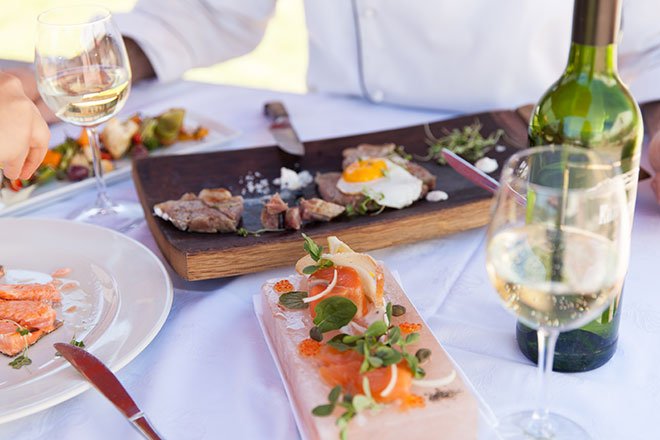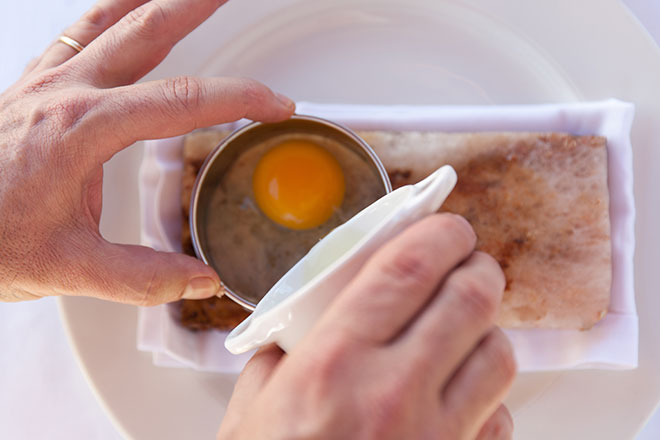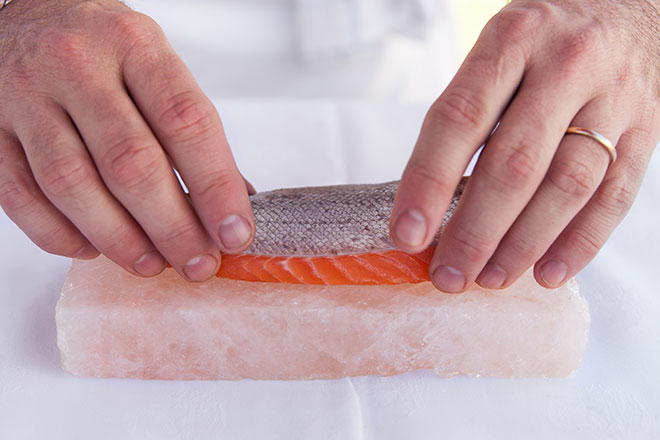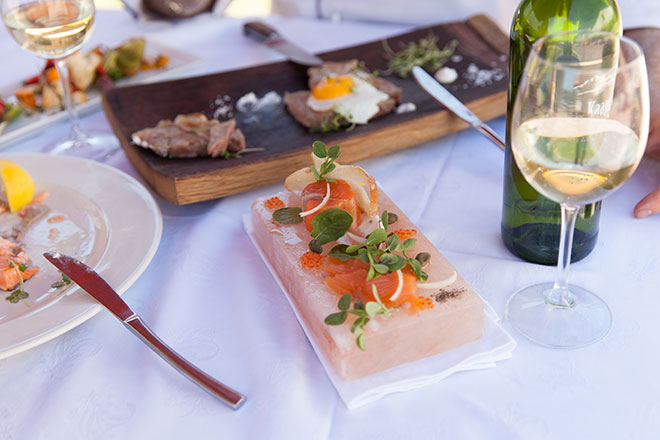A salt slab will change the way you cook: here’s why you should try it

Basically, this is how it works
Moisture in the food encourages the top layer of salt on the salt slab to evaporate thereby gently seasoning the food, while also imparting trace minerals from the ancient slab. You can use a salt slab to cook your food by either heating it in the oven or on the braai. It can also be used to cure fish such as trout and used to present your food elegantly.
5 reasons to cook with a salt slab
- It retains heat for about 30–40 minutes away from the heat source (similar to cooking with cast iron), so using a salt slab is great for social cooking. Once heated, the salt slab can be brought out to the table so everyone can prepare their own steak just how they like it.
- Cooking with a salt slab doesn’t require any butter or oil, because nothing sticks to the salt, so it’s great if you’re wanting to cut out cooking fats.
- You don’t need to season your food before or after cooking, as the slab does it for you as well as imparting healthy minerals and trace elements into your food, like magnesium and zinc.
- It’s a theatrical and engaging way for those who love cooking and entertaining in a social environment.
- There’s no pan to wash and clean-up afterwards, as the salt slab is anti-microbial, it simply requires a quick scrape and wipe down.

Important salt slab cooking techniques to remember:
Heat it up slowly: Salt retains moisture, so you have to heat the slab up gradually in the oven (or on the fire side) to give the water trapped inside a chance to evaporate. If a cold salt slab is inserted into a hot oven or fire, the water inside will expand and can cause fissures or crack the slab in half.
Cook hot and fast: High temperatures allow the block to simultaneously seal the foods you’re cooking, thereby locking the juices in and creating a delicately flavoured salt crust. Cooking long and low on salt slabs will over salt your food and extract too much moisture from the food.
Prepare cold: The salt slab isn’t only for heating. Salt can be cooled to -20°C. So you can use it to infuse caramel ice cream with a salted twist, cure fish and even serve delicately-infused, chocolate-dipped fruit cubes.

Dry your food: If you’ve marinated anything in a water based marinade that is going to be cooked on the slab, you need to dry it off as much as possible, otherwise the heat of the slab combined with all the moisture will dissolve the surface layer of the salt slab quite quickly and cake around the meat. With seafood, pat it dry and then cook for perfectly seasoned fish.
Cook and serve separately: The salt slab changes colour during the cooking process and over time becomes a matt white, so for use as a serving platter, keep a separate one handy, so it maintains that beautiful rose quartz colour of the salt crystal.

How to clean your salt slab:
With a giant block of salt, water is not your friend. Salt is naturally anti-microbial, so it doesn’t need any disinfecting or elbow grease. You can usually just give it a quick wipe with a damp cloth, dry it off and you’re good to go.
Here’s what we suggest you do every now and then for a more thorough clean, so that it lasts as long as possible:
- Scrape the cooked on grit off the slab with a metal turner or a sharp blade.
- Harness the power of lemons and more salt by sprinkling some coarse salt on the slab and giving it a rub with half a lemon.
- Then spritz it down with hot water very quickly, towel dry and leave to dry.
- No soap, no hot water, no dishwashing – your salt slab will dissolve and crumble.

Inspired to try cooking on a salt slab? Try making steak and eggs on a salt slab or even curing trout.
Head this way to get a Jimmy Public Salt Slab and begin adding food to your salt.
